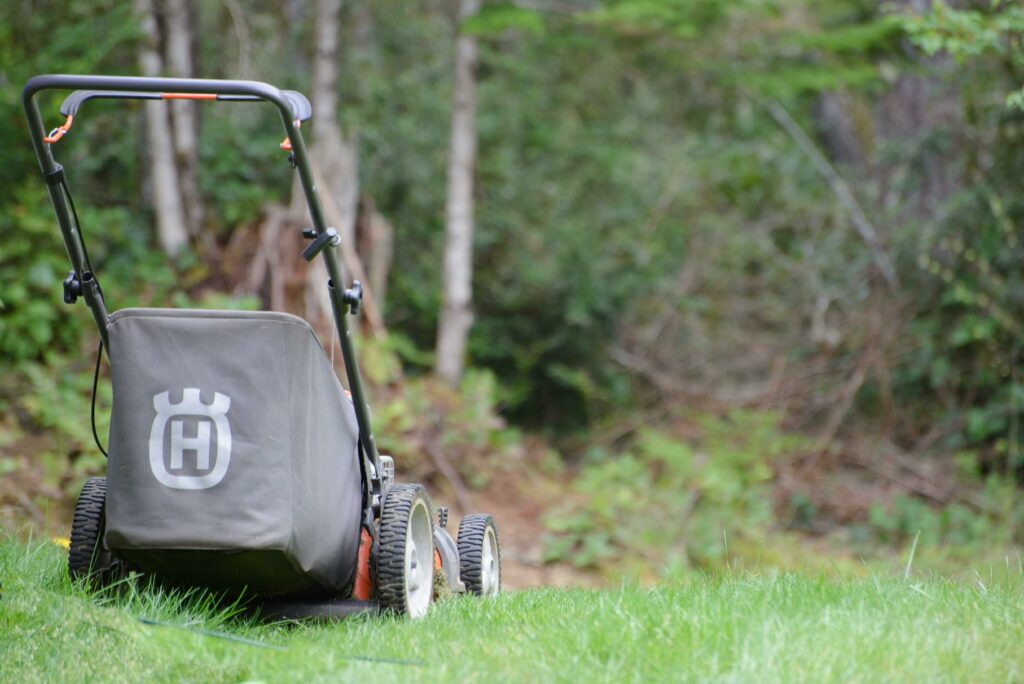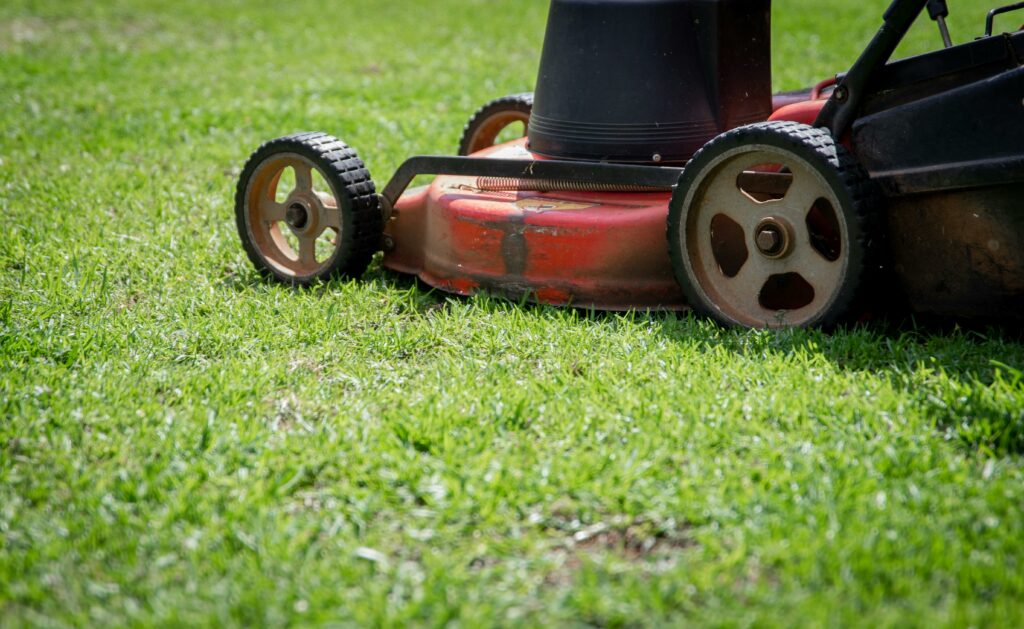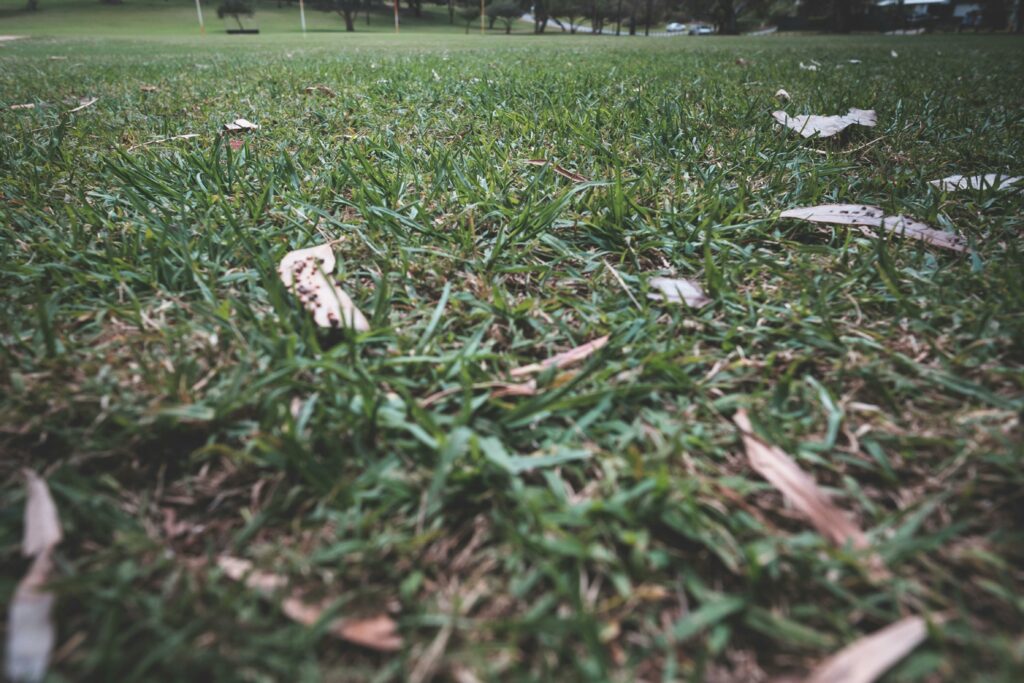As the intense North Texas summer heat gives way to the milder days of fall, your lawn’s needs begin to change. For warm-season grasses like Bermuda and St. Augustine, this season is a critical window for preparation before winter dormancy. One of the most impactful things you can do during this time is to adjust your mowing height. Getting it right sets the stage for a healthier, more resilient lawn come spring.
Why Fall Mowing Height is Different
During the peak growing season, a slightly taller cut can help shade the soil, conserve moisture, and choke out weeds. But fall is all about transition. As growth slows down, the goals shift:
- Preventing Matting and Fungus: Longer grass can mat down under fallen leaves and morning dew, creating a damp environment that’s a breeding ground for fungal diseases like Brown Patch.
- Preparing for Dormancy: A gradually lowered cut allows more sunlight to reach the crown of the grass, strengthening the root system for the winter ahead.
- Managing Debris: Shorter grass means leaves are less likely to get trapped, making cleanup easier and preventing suffocation of the turf.
- Discouraging Pests: A tidy, well-mowed lawn is less inviting to overwintering insects and rodents.

The Goldilocks Zone: Not Too Short, Not Too Tall
The key is a balanced approach. Here’s a breakdown of the ideal heights for our most common North Texas grasses:
- Bermuda Grass: Aim for a final height of 2 to 2.5 inches. Bermuda is a tough, resilient grass that can handle a shorter cut. This height helps it conserve energy in the roots and prevents it from becoming overly thatchy.
- Zoysia Grass: A great middle-ground grass, Zoysia should be cut to 1.5 to 2.5 inches in the fall. It thrives with a slightly shorter cut than Bermuda and is less prone to thatch when mowed at the proper height. Avoid letting it grow too long, as it can become dense and prone to thatch buildup.
- St. Augustine Grass: This grass is more sensitive, so keep it a bit taller. A final height of 2.5 to 3 inches is ideal. Cutting St. Augustine too short can severely stress it, damaging the runners (stolons) and leaving it vulnerable.
The Dangers of Getting It Wrong
- Scalping (Too Short): Cutting off more than one-third of the blade at once shocks the plant, weakening the roots and exposing the soil to sunlight. This invites a flush of winter weeds like henbit and chickweed, which thrive in thin, stressed turf.
- Letting It Go (Too Long): Overly long grass in the fall will mat down, trap moisture, and become a haven for fungi. It can also lead to a patchy, uneven appearance as it goes dormant.
Pro Tips for Fall Mowing Success
Adjusting the height isn’t the only key to a perfect fall lawn. Follow these best practices for the best results:
- Lower the Height Gradually: If your lawn is at 3.5 inches, don’t jump straight to 2.5. Over two or three mowing sessions, lower the blade one notch at a time. This gradual reduction minimizes stress on the grass.
- Sharpen Your Mower Blades: This is non-negotiable in the fall. A dull blade tears and frays the grass tips, creating open wounds for disease to enter. A clean, sharp cut helps the grass heal quickly and stay healthy.
- Manage Your Clippings: As you lower the height and leaves begin to fall, bagging your clippings can be a wise move. This prevents a thick layer of organic material from smothering the grass. Alternatively, use a mulching mower to chop everything finely, where it can decompose without forming a mat.
- Don’t Stop Mowing Too Early: Keep mowing as long as the grass is growing. The first frost is your signal that the growing season has truly ended. Until then, maintain a regular schedule based on growth, not just the calendar.
- Finish with a Clean Edge: A crisp edge along your sidewalks and flower beds instantly makes your entire property look professionally maintained, even as the lawn enters its dormant, brown phase.
Quick-Reference Fall Mowing Chart for North Texas Lawns
| Grass Type | Ideal Fall Height | Key Reason | Danger of Scalping |
|---|---|---|---|
| Bermuda | 2 – 2.5 inches | Prevents matting, encourages strong roots | High – invites weeds and stresses the lawn |
| Zoysia | 1.5 – 2.5 inches | Prevents thatch buildup, maintains density | Medium – can slow spring green-up |
| St. Augustine | 2.5 – 3 inches | Protects sensitive stolons, prevents fungus | Very High – can permanently damage the lawn |
The Final Touch: Fall Pre-Emergent
Your fall mowing strategy works hand-in-hand with weed control. A slightly shorter lawn allows for better penetration of pre-emergent herbicides. If you haven’t applied yours yet, now is the time! This creates a barrier in the soil that stops winter weed seeds from germinating. It’s also the perfect time to prepare your lawn for seasonal weed control.
If you haven’t yet applied your pre-emergent, now’s the time to learn about the best pre-emergent to use in the fall to keep winter weeds from taking over.
Let Ryno Lawn Care Keep Your Lawn Looking Its Best
Fall lawn prep doesn’t have to be a chore. If you’d rather not worry about mowing heights, sharpening blades, or seasonal schedules, let the pros handle it for you.
At Ryno Lawn Care, we provide expert, seasonally-aware lawn mowing services throughout North Texas. We know exactly how to adjust our practices for Bermuda and St. Augustine grasses, ensuring your lawn enters winter healthy and is poised for a vigorous spring recovery.
Check out our lawn mowing service page to keep your lawn looking sharp this fall!
FAQ about fall lawn mowing height
How short can I cut my grass in the fall?
In North Texas, gradually lower your warm-season grass to its recommended winter height: 2-2.5 inches for Bermuda, 1.5-2.5 inches for Zoysia, and 2.5-3 inches for St. Augustine. Never remove more than one-third of the blade in a single mowing to avoid scalping.
Is it better to leave your lawn long or short for winter?
It is better to leave it short, but not scalped. A shorter height prevents matting and fungal disease, while still protecting the crown and root system through the winter.
Is 2 inches too short for grass?
For Bermuda and Zoysia grass, 2 inches is an ideal fall height. However, it is too short for St. Augustine, which can be severely damaged at that height.
What height should I cut my grass in November?
In November, aim for the final winter height for your grass type. For most North Texas lawns, this means 2-2.5 inches for Bermuda, 1.5-2.5 for Zoysia, and 2.5-3 inches for St. Augustine.


